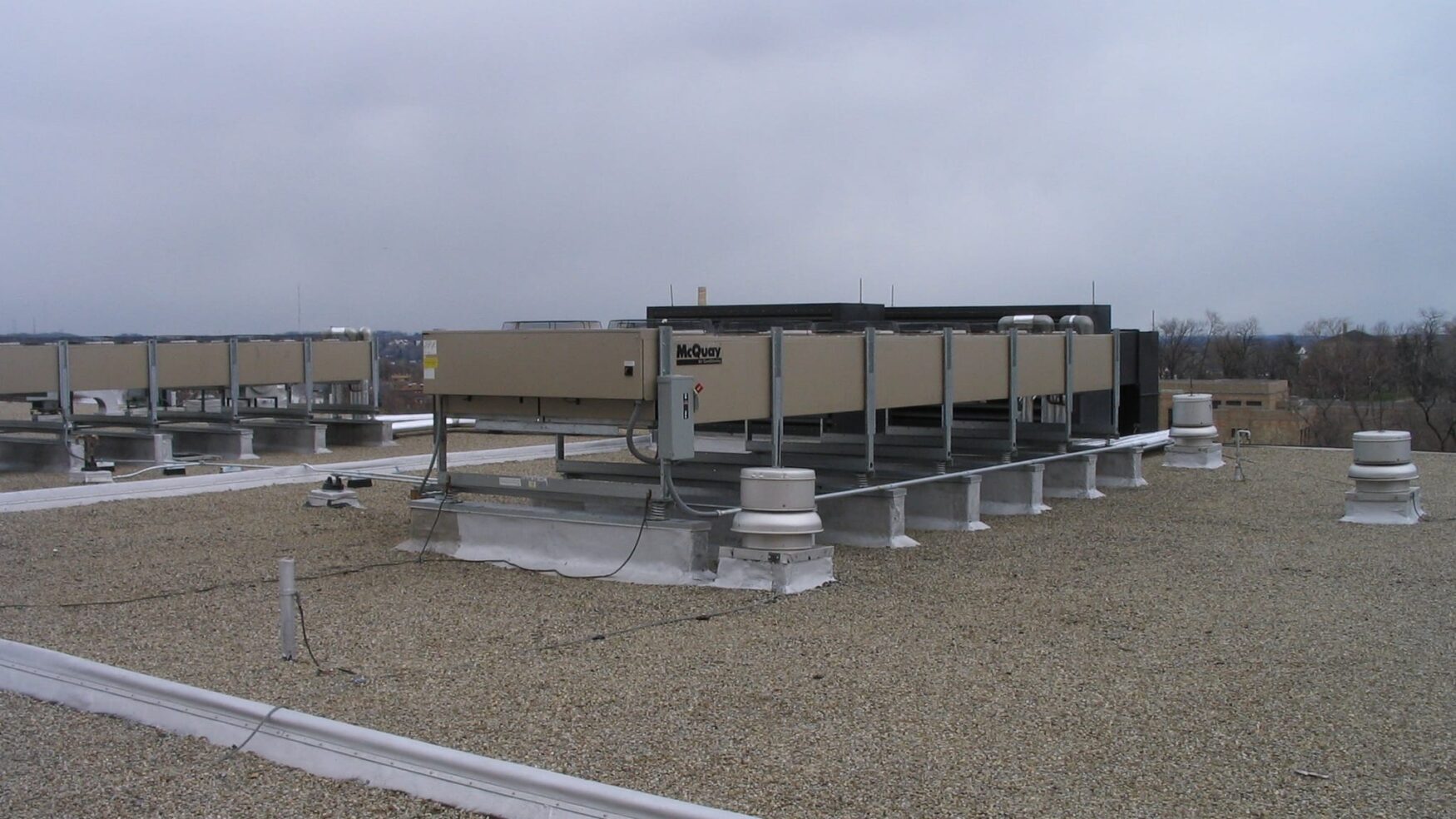
VA – O.R. Chiller Replacement
OWNER
Veteran’s Administration
PRIME CONTRACTOR
RBVetCo, LLC d/b/a Rocky Bleier Construction Group
CONTRACTING TYPE
Design-Bid-Build
PROJECT START
August 2006
COMPLETION
April 2007
OWNER
PRIME CONTRACTOR
CONTRACTING TYPE
PROJECT START
COMPLETION
Veteran’s Administration
RBVetCo, LLC d/b/a Rocky Bleier Construction Group
Design-Bid-Build
August 2006
April 2007
The chiller replacement project consisted of replacing two existing 100 ton split system chillers with two new 150 ton split system chillers. The installation of the new chiller system was completed in an arrangement that allowed the systems to be replaced one at a time in order to maintain full operations for the operating rooms which the existing and new system supported. The room which housed the existing chillers was on the 4th floor and in order to remove them, an opening had to be made in the exterior of the building. This temporary opening was made through an exterior brick wall and interior plaster wall. The new chillers and old chillers were hoisted through this opening. Modifications needed to be made, in order to remove the old and install the new chillers. The new chillers required the removal and replacement of the existing condenser units on the 5th floor roof. New support curbs were installed and flashed in to accommodate the units. Once chiller installation and piping was complete the new controls were installed. The system was programmed to be completely automated and controlled by the DDC system via new automatic control valves along with interfacing to the existing Johnson Control System.
This work illustrates RBCG’s ability to manage difficult subcontracts such as large mechanical system upgrades, electrical system upgrades and interior/exterior finishes while meeting or exceeding the construction schedule.
Construction took place within very restrictive operating conditions that included time, scheduling, logistic and environmental restraints and also included meeting critical milestones to avoid impacting the operating rooms and their ability to maintain their patient operating schedule.
